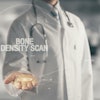Dear X-Ray Insider,
At healthcare institutions where a CT scanner is a luxury, the early detection of lung cancer can be tricky business. Sure, x-ray is an alternative imaging modality, but how good is it? And how should an institution go about determining if their cancer miss rate is acceptable?
A group from Burnley, U.K., offered one answer. They conducted a retrospective evaluation of chest x-ray films from patients diagnosed with primary lung cancer and found that their miss rate wasn't bad, but could certainly stand improvement. To read more about this presentation at the 2006 American Thoracic Society meeting, click here.
In other X-Ray Digital Community news, several studies address fracture risk and osteoporosis in women. In the first, a group from Australia stated that calcium supplements can effectively prevent fractures in older women, but only if taken consistently.
Speaking of compliance, the second study determined that a reduced dose of bisphosphonate ibandronate didn't adversely affect its efficacy in women with osteoporosis and actually improved adherence. Also, data from the Fracture Prevention Trial indicate that age should not be a barrier for prescribing the antiosteoporosis drug teriparatide in osteoporotic women.
Orthopedic specialists need to know if the break is healing properly should a fracture occur. Unfortunately, digital x-ray is not the modality to assess bone healing, according to Austrian radiologists and orthopedists. Click here for the details.
Finally, learn about the role of radiography in repeat resection of primary bladder cancer and in the thoracic column after blunt trauma.















